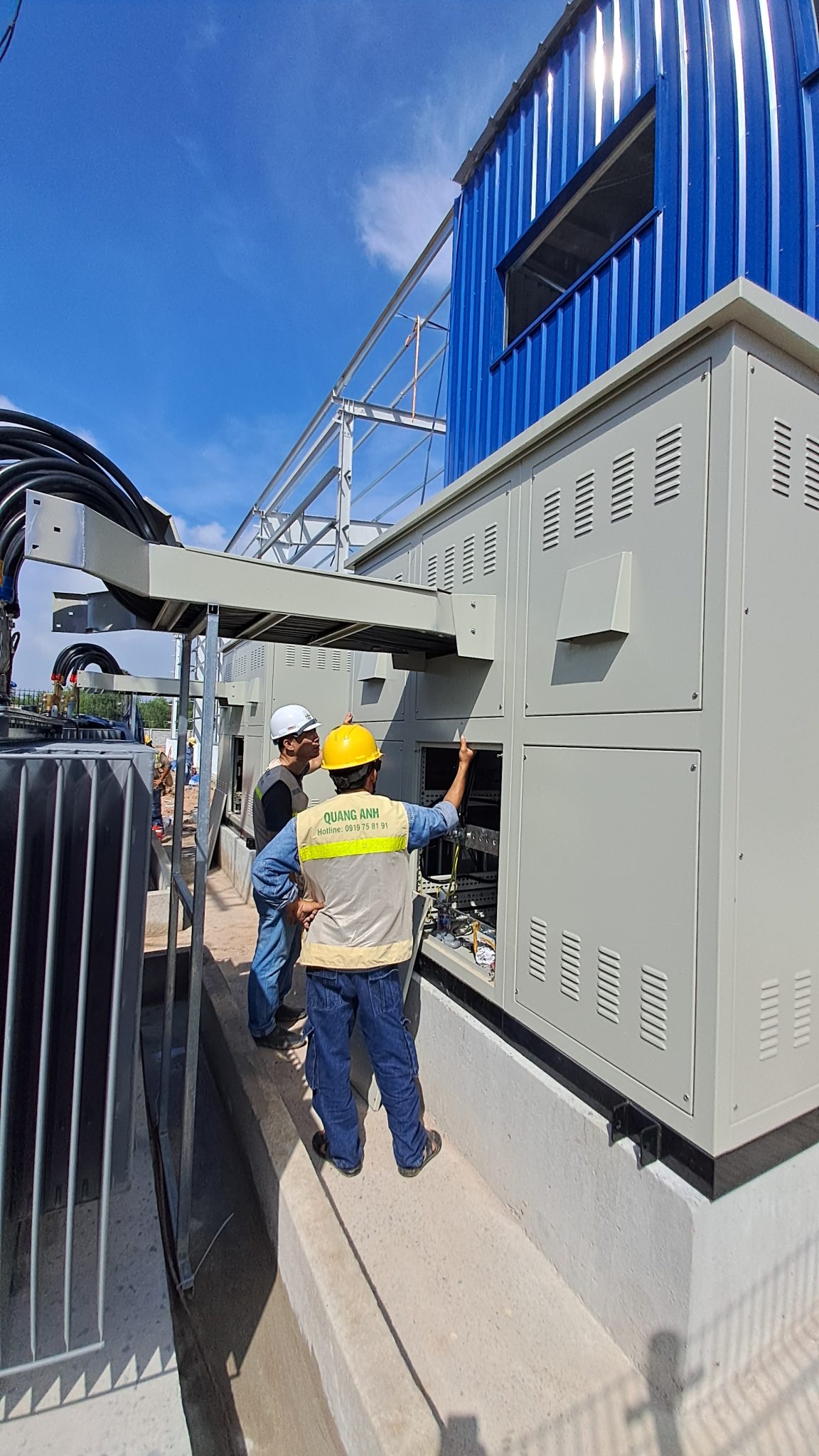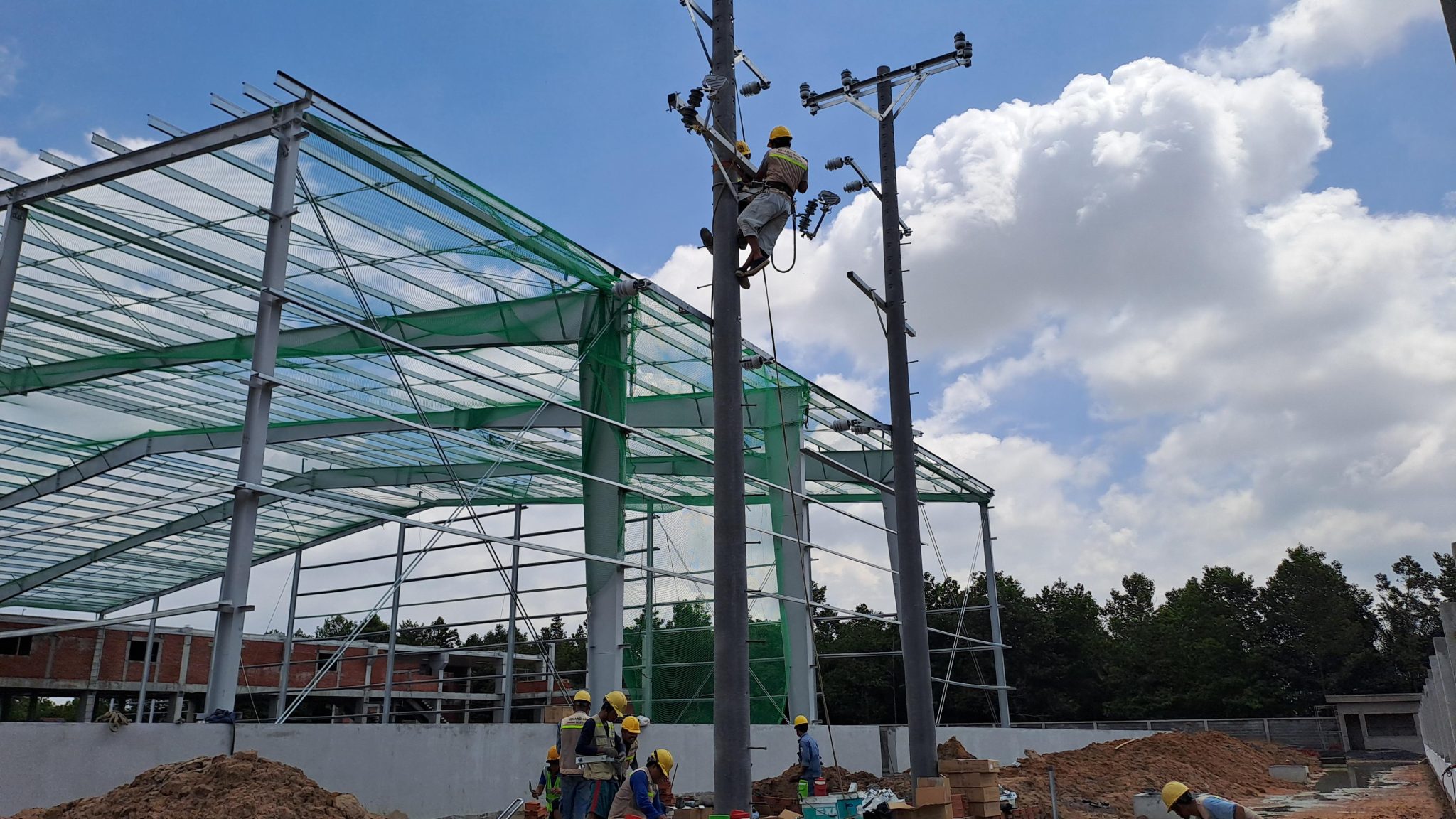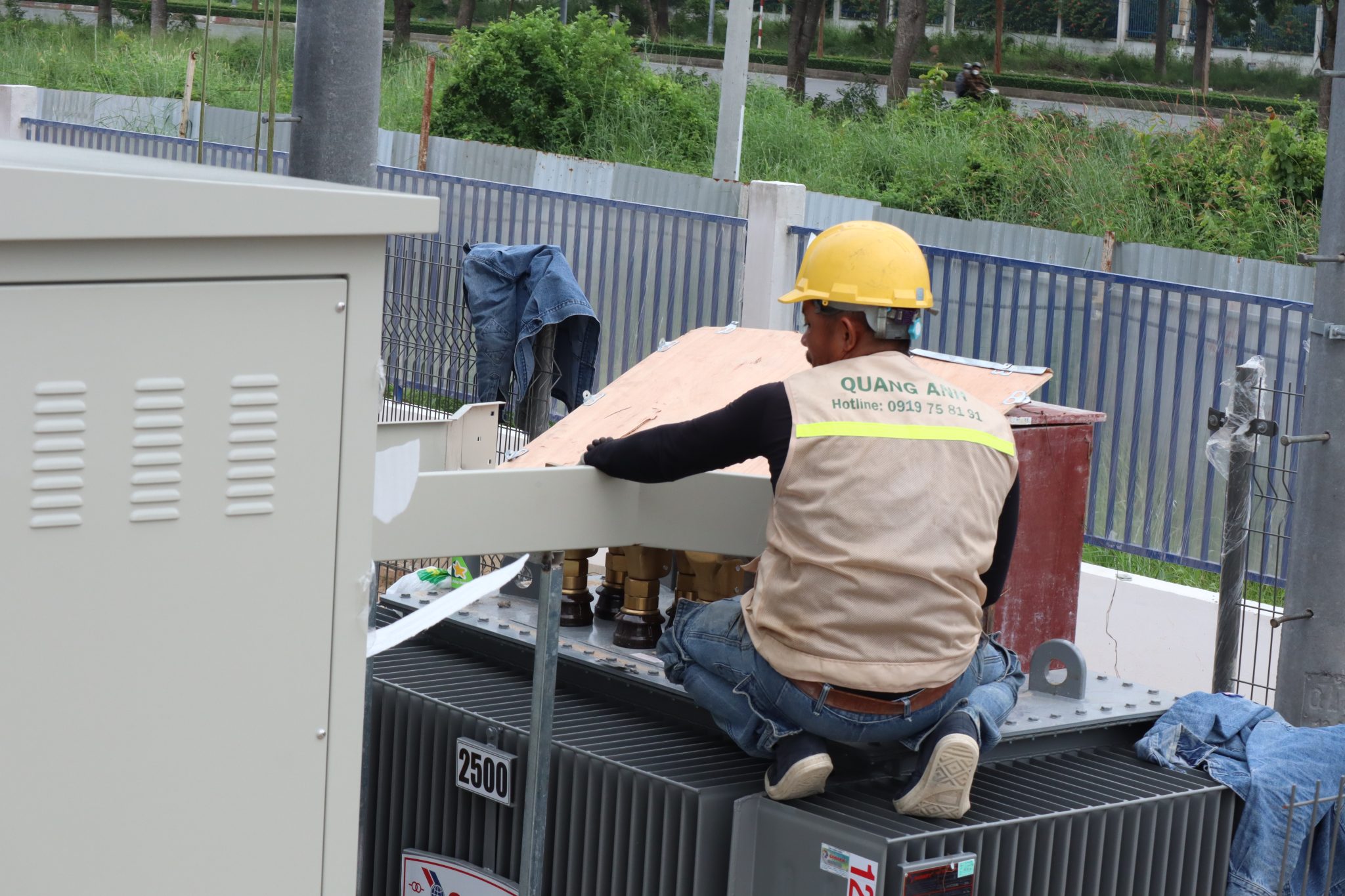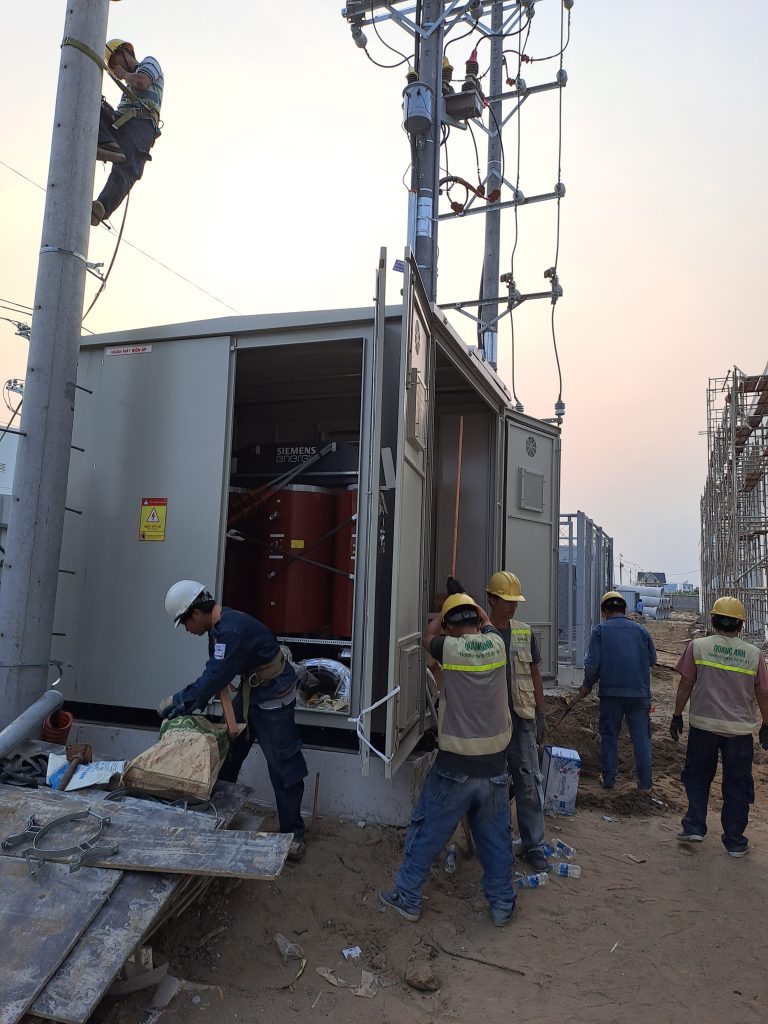News
Factory Substation: Optimizing Energy for Production
Factory Substations are crucial static electrical devices for converting and transmitting electrical energy efficiently, typically located within factories to serve production and equipment operation.
Concept and Function of Factory Substations
A factory substation is a static electrical device with the main task of transmitting and converting electrical energy via electromagnetic induction, maintaining current frequency. This station typically includes transformers, control systems, protection, measurement, along with cooling and insulation systems. In factories, substations play a role in providing a stable power source for production equipment, ensuring continuous and safe operations.
For factories, substations are extremely important for maintaining performance and safety for the entire production system. Understanding the concept and function of factory substations helps business leaders and system engineers grasp effective energy management.
Concept of Factory Substations
Substations, essentially, are static electrical devices used to transmit and convert electrical energy between circuits through electromagnetic induction. Factory substations are the “heart” of the electrical distribution system, responsible for converting voltage from high levels to suitable levels for equipment and production lines.
Function of Factory Substations
Substations perform several necessary functions to maintain continuous and safe factory operations:
-
Voltage transformation: From high levels like 110kV or 220kV, the substation adjusts to user voltages from 22kV to 35kV or lower, depending on specific factory needs.
-
Power distribution: Besides transformation, the substation also distributes power through busbars, isolators, and modern protective devices.
-
Protection and control: Equipped with protection devices to prevent electrical faults like overloads or short circuits, these systems help maintain safety and stability for production lines.
-
Power stability: Ensures continuous and stable power, helping avoid disruptions in production processes, increasing operational efficiency.
Basic Components of Factory Substations
A typical substation includes the following main components:
-
Transformer: Alters the voltage level according to system requirements.
-
Busbars and isolators: Supports distribution and isolation of system parts when maintenance or repairs are needed.
-
Measurement and protection devices: Includes meters, breakers, current and voltage measurement devices to monitor and ensure system safety.
-
Earthing and lightning protection system: Ensures safety for both the system and humans in case of electrical faults.
-
Own-power system: Meets the electrical demand for the operation of the substation itself.
-
Operation and power distribution area: This is where operation, maintenance, and power distribution to the final equipment in the factory is executed.
Substations not only change voltage levels but also distribute power, protect, and stabilize electrical flow for the entire factory.

Types and Applications of Industrial Substations
Substations are classified into extra-high, high, medium, and low voltage, each suitable for different voltage levels serving industrial needs. For instance, high voltage substations (110kV-220kV) are suitable for large industrial parks, while medium voltage (22kV-35kV) and low voltage (below 1kV) are used for factories and residential areas. Each type of substation has a certain utility in maintaining a stable and safe electrical system for industrial activities.
In an industrial environment, substations play a crucial role in ensuring stable and safe power supply. Each type of industrial substation is designed with unique features and structures for specific use. First, regarding classification by voltage, there are extra-high, high, medium, and low voltage types.
- Extra-high voltage: Substations exceeding 500 kV are applied in large industrial systems.
- High voltage: Includes voltage levels like 66 kV, 110 kV, 220 kV, and 500 kV, suitable for large-scale industrial needs.
- Medium voltage: Typically ranges from 6 kV to 35 kV, mainly serving medium and small factories.
- Low voltage: Has a voltage level below 1 kV, suitable for residential areas and small industrial zones.
The highlight in the industrial space is the diversification in structure and device positioning of substations:
- Pole-mounted substations: Transformers and devices are mounted on poles, suitable for limited spaces with small capacity.
- Frame-mounted substations: Placed on support structures between two poles, they assist in high-voltage power transmission in heavy industry.
- Kios substations: Designed in metal enclosures and separate compartments, commonly used in residential areas and high-rise buildings.
The application of industrial substations is very diverse:
- Ensure stable power for factories, transforming from high-voltage grid to serve production.
- Frame-mounted and medium-voltage substations help efficient power transmission in industrial zones.
- Enclosed substations and kios substations ensure safety and aesthetics, minimizing noise and environmental impact.
Industrial substations are not just effective connectors between power sources and consumption needs but also play a role in protecting the industrial environment from unwanted impacts.

Substation Construction and Maintenance Process
Building factory substations requires strict adherence to safety technical standards. The substation location should be carefully selected to ensure safety and convenience for maintenance. Design and installation must follow electrical technical standards, with full protection systems like breakers and insulation devices to prevent incidents. Regular maintenance is essential to maintain the performance and safety of the factory’s electrical system.
Construction Process of Substation
- Design and preparation:
- Determine substation location, ensuring safety and meeting usage needs.
- Prepare necessary materials and equipment like transformers, cabinets, cables, and protection systems.
- Infrastructure construction:
- Construct a solid foundation for the substation.
- Ensure good drainage systems to avoid flooding.
- Equipment installation:
- Install transformers in the prepared position.
- Connect cables and appropriate protection devices.
- Testing and commissioning:
- Conduct testing to ensure technical operation of transformers and protection devices.
Maintenance Process of Substation
- Survey and Evaluation:
- Survey operational condition of the substation.
- Analyze data to identify potential issues.
- General Cleaning:
- Clean the substation, including high voltage, low voltage parts, and cooling fans.
- Deep Inspections:
- Check high voltage and low voltage cables.
- Check insulation values and operating temperature of transformers.
- Improvement and Completion:
- Improve design and installation to optimize operation.
- Refill oil with the correct type if necessary.
- Recording and Monitoring:
- Record inspection and periodic maintenance results.
- Inspect every 3 months to ensure stable operation of the substation.
Progress in Maintenance
- Proposal and Confirmation:
- Create a maintenance proposal based on inspection results.
- Determine urgency level and repair options.
- Repair or Replacement:
- Repair or replace damaged parts.
- Ensure thorough checks before putting back into use.
Factory substations operate efficiently and safely when implementing a full professional construction and maintenance process.

Properly deploying factory substations brings numerous benefits from high energy efficiency to long-term technical safety. This is an important part of the strategy for optimizing modern production activities.
Contact QuangAnhcons via Hotline: +84 9 1975 8191 for consultancy on optimal factory substation solutions.
QuangAnhcons provides professional substation construction and maintenance services, ensuring compliance with technical and safety standards, delivering efficient energy solutions for factories.

 Tiếng Việt
Tiếng Việt 简体中文
简体中文 Deutsch
Deutsch 日本語
日本語 한국어
한국어 ไทย
ไทย Русский
Русский Français
Français
